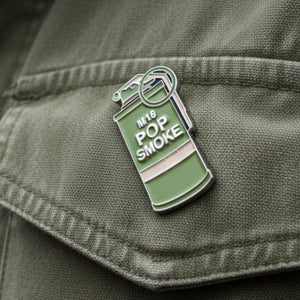Navy on 10 suicides aboard same ship: Oops
The Navy recently reported sustaining 10 suicides aboard the aircraft carrier, USS George Washington, in as many months. Following the report, the Navy insisted that they were doing everything that could be done to prevent these tragedies and assist Sailors who were at risk.

The Navy recently reported sustaining 10 suicides aboard the aircraft carrier, USS George Washington, in as many months. Following the report, the Navy insisted that they were doing everything that could be done to prevent these tragedies and assist Sailors who were at risk.
Now, in their first public address since the report, Naval leadership is admitting fault and acknowledging the factors that contributed to these suicides which Sailors have been reporting from the time they boarded the ship which was unfit to live on.
Gear Spotlight: Relevant to This Story


Commander of Naval Air Force Atlantic, Rear Adm. John Meier, said earlier this week, “If I knew then what I know today, I think we would have clearly delayed crew move aboard.” Meier’s statement referred to the Navy’s choice to move hundreds of Sailors aboard the USS George Washington while it was still undergoing heavy and long-term maintenance, effectively rendering it a floating construction zone.
This acknowledgement does reflect ownership on Meier’s part, but also highlights the stark and grave manner with which the Navy initially responded to the ten suicides aboard the ship.
<blockquote class="twitter-tweet"><p lang="en" dir="ltr">The parents of a sailor who died by suicide while on board the USS George Washington — one of the seven crew members who have died in the past year, including four by suicide — blast the Navy's response to the crisis as "ridiculous" <a href="https://t.co/tZ8wzCaSeL">https://t.co/tZ8wzCaSeL</a></p>— CNN Politics (@CNNPolitics) <a href="https://twitter.com/CNNPolitics/status/1521874069922197505?ref_src=twsrc%5Etfw">May 4, 2022</a></blockquote> <script async src="https://platform.twitter.com/widgets.js" charset="utf-8"></script>
On April 22 of this year, the highest ranking enlisted man in the Navy, Master Chief Petty Officer of the Navy Russell Smith held an all hands meeting aboard the USS George Washington to say little more than things could be worse.
While addressing the Sailors onboard, he encouraged them to raise concerns if they have any, but to do so with tempered expectations. At one point in his address, Smith said, “What you’re not doing is sleeping in a foxhole like a Marine might be doing,” implying that his Sailors didn’t have it as bad as they might have thought.
Rear Adm. John Meier has ordered two investigations. The first to determine whether the 10 suicided in the past ten months were connected, and the second to “look more deeply at command climate, command culture, onboarding, and what I would describe as systemic stressors to working in the shipyard environment.”
A number of Sailors have come forward anonymously to describe these systematic stressors. One said, “[We] live in a construction zone. There’s grinding, needle gunning, there’s always problems with ventilation, there’s always problems with hot water.”
Two other Sailors also reported that during the winter, the ship would become so cold that the ships floors would crack if walked on.
Former Naval officer and Virginia Congresswoman, Elaine Luria visited the ship as well this week. Following her visit, she asked in a press conference, “why does it take such a tragic string of events for the Navy to really stop and look at all of the things that could have been contributing factors and change their practices?”
She also said that while Navy leadership is “very good at – once there is a problem identified – finding solutions and corrective actions,” but added that “they are not always as proactive in certain circumstances in identifying problems before an incident of some type happens.”













